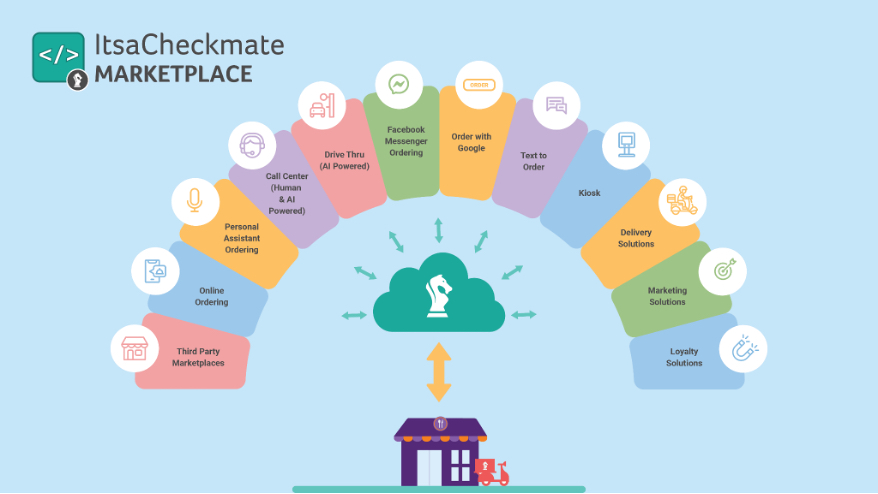ItsaCheckmate has launched Marketplace, a new product that allows “innovators and startups” to build a single integration that instantly provides them with access to more than 50 different point-of-sale systems and 20,000 restaurants across the globe.
 Announcing the update, Checkmate said “third-party delivery platforms have certainly proven their relevance” during the pandemic and continue to grow and added that the next phase is the including a diverse mix of solutions like artificial intelligence, social media ordering, text and kiosk ordering, as well as robotic deliveries, in-store QR codes and loyalty solutions.
Announcing the update, Checkmate said “third-party delivery platforms have certainly proven their relevance” during the pandemic and continue to grow and added that the next phase is the including a diverse mix of solutions like artificial intelligence, social media ordering, text and kiosk ordering, as well as robotic deliveries, in-store QR codes and loyalty solutions.
“With Marketplace, ItsaCheckmate bridges the gap between this new wave of restaurant technology and its adoption, providing an immense boost to the digital transformation initiatives of its restaurant customers,” the New York-based company said.
For technology companies, Marketplace provides a self-service, developer-friendly, open API platform that allows them to build a single integration and be able to read and write to over 50 different POS systems within a few days—including custom points-of-sale for some of the biggest restaurant brands in the world.
Some early adopters range from restaurant commerce platforms like GoTab to artificial intelligence startups like ConverseNow and OhWaiter to robot delivery startups like Coco. For restaurants, ItsaCheckmate has created a simple user interface for its customers to easily plug and play these solutions when they become available.
“We are excited to make the next evolution of restaurant technology available for our customers quickly and easily,” said Vishal Agarwal, ItsaCheckmate founder and CEO. “The launch of Marketplace marks an incredible milestone in our journey. We are first and foremost an engineering company and it is crucial for us to ensure our customers always have access to the best and latest technology solutions. Marketplace reinforces our leadership in the technology enablement space by promoting the deployment and adoption of new ordering/fulfillment channels, and business models.”



